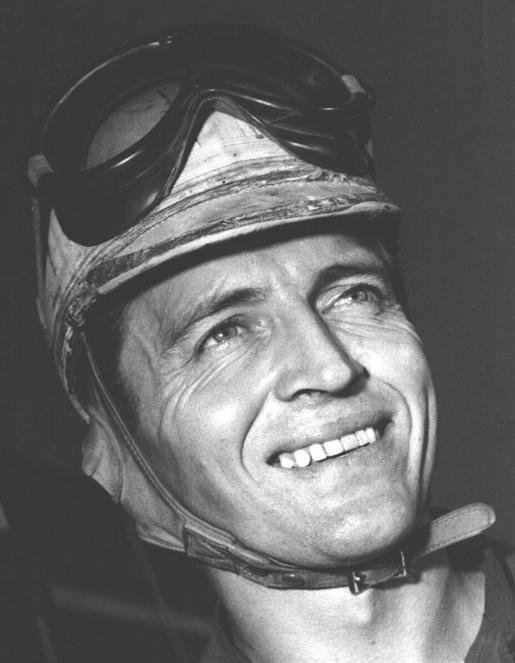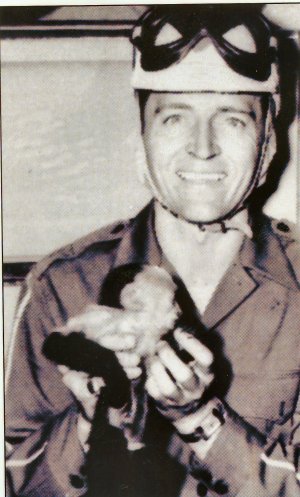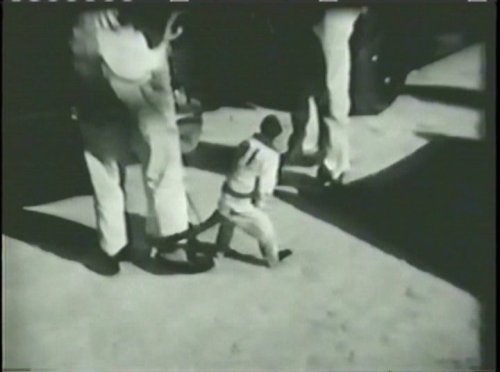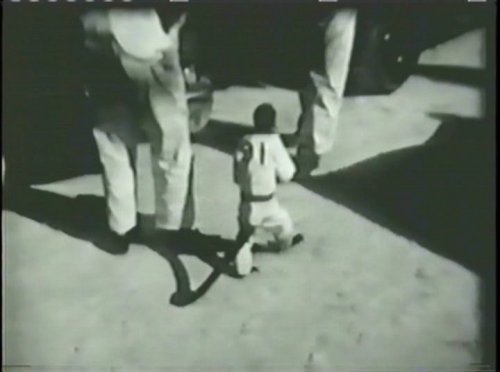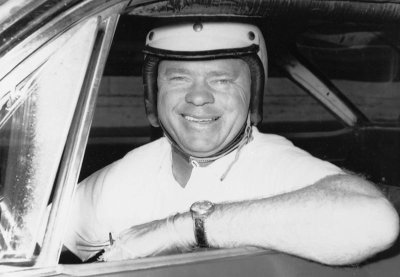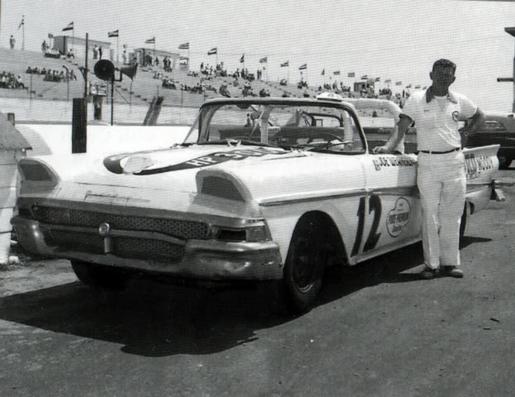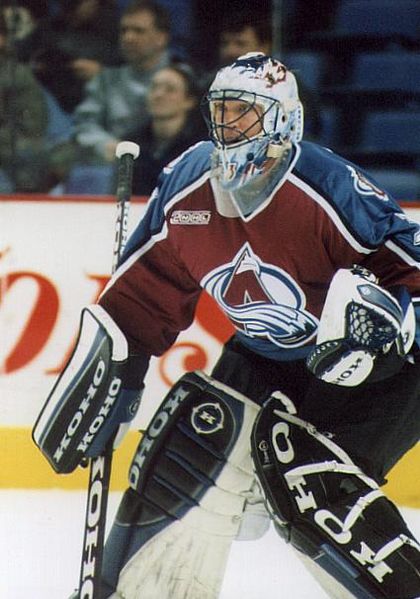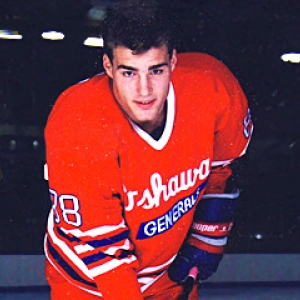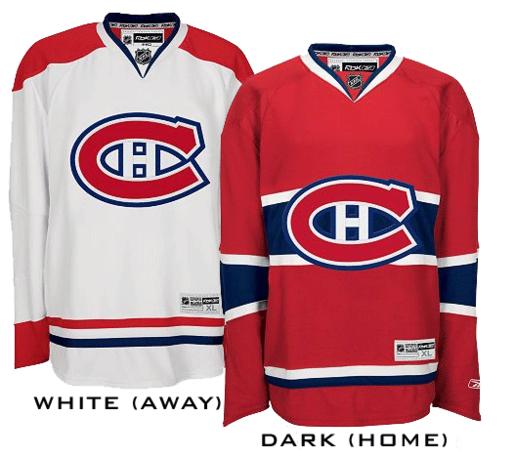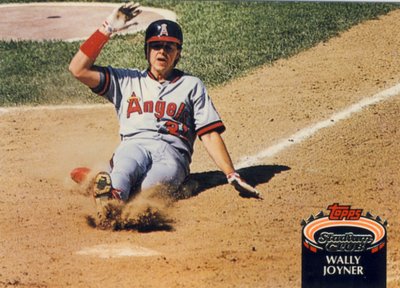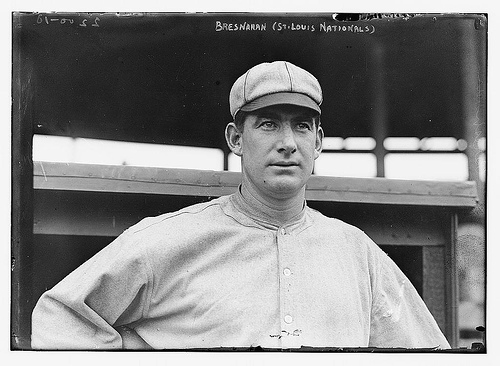Did Rickey Henderson Really Tell John Olerud He Reminded Henderson of…John Olerud?
Here is the latest in a series of examinations into urban legends about baseball and whether they are true or false. Click here to view an archive of the baseball urban legends featured so far.
BASEBALL URBAN LEGEND: When Rickey Henderson was introduced to his new Seattle Mariner teammate John Olerud, he told Olerud that he reminded him of a player Henderson had played with before. That player was John Olerud.
Rickey Henderson is one of the best baseball players of all-time. And he’s certainly one of the most colorful.

Henderson’s colorful ways and odd manner of speaking (often referring to himself in the third person) has led to tons of amusing stories about him over his long (1979-2003) career, but, as would be expected, for every TRUE story there are likely twice as many false ones.
One particular story played on Rickey’s travels around the league as well as his faulty memory.
Henderson, like other great players, found himself being “forced” to play for different teams at the end of his career in order to keep his career going. Unlike most players, though, Henderson just almost refused to retire, so he ended his career playing for a remarkable seven different teams in his last seven seasons (and that’s only counting the Padres once, who he had two stints with over that time period).
Henderson spent the 1999 season and part of the 2000 season with the New York Mets.
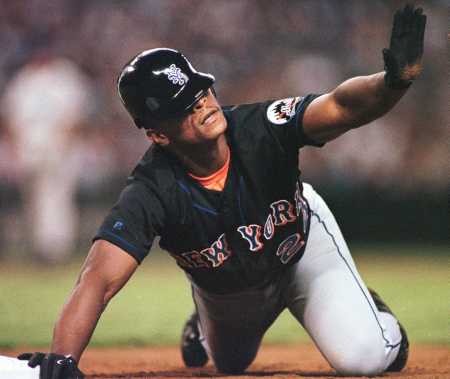
While there, he played alongside John Olerud, who he also had played with for part of a season in Toronto.
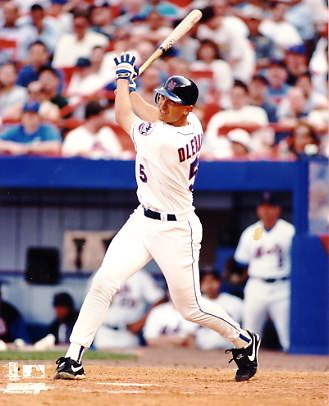
Olerud was a great baseball player who stood out from other players for the fact that he always wore a batting helmet, whether he was batting or in the field. This was due to a brain aneurysm he suffered while in college. The fear was that if he were struck in the head as an adult, well, the results would not be good, so he just wore a batting helmet whenever he was on the field.
Before the 2000 season, Olerud signed as a free agent with his hometown Seattle Mariners.
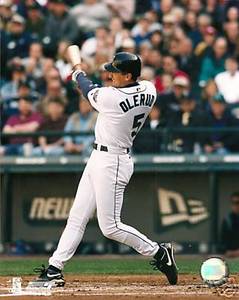
During the 2000 season, Henderson also ended up as a Mariner.
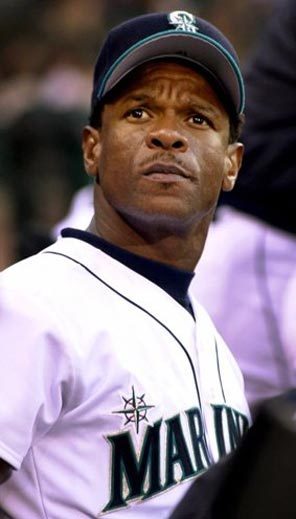
As the story goes:
When he hooked up with the Seattle Mariners last year, Rickey is said to have approached John Olerud, who had once suffered a brain aneurysm, and asked about his unusual practice of wearing a batting helmet in the field. Henderson says, “I used to play with a dude in New York who did the same thing.”
“That was me,” said Olerud, who was Henderson’s teammate with both the Mets and the Blue Jays.


